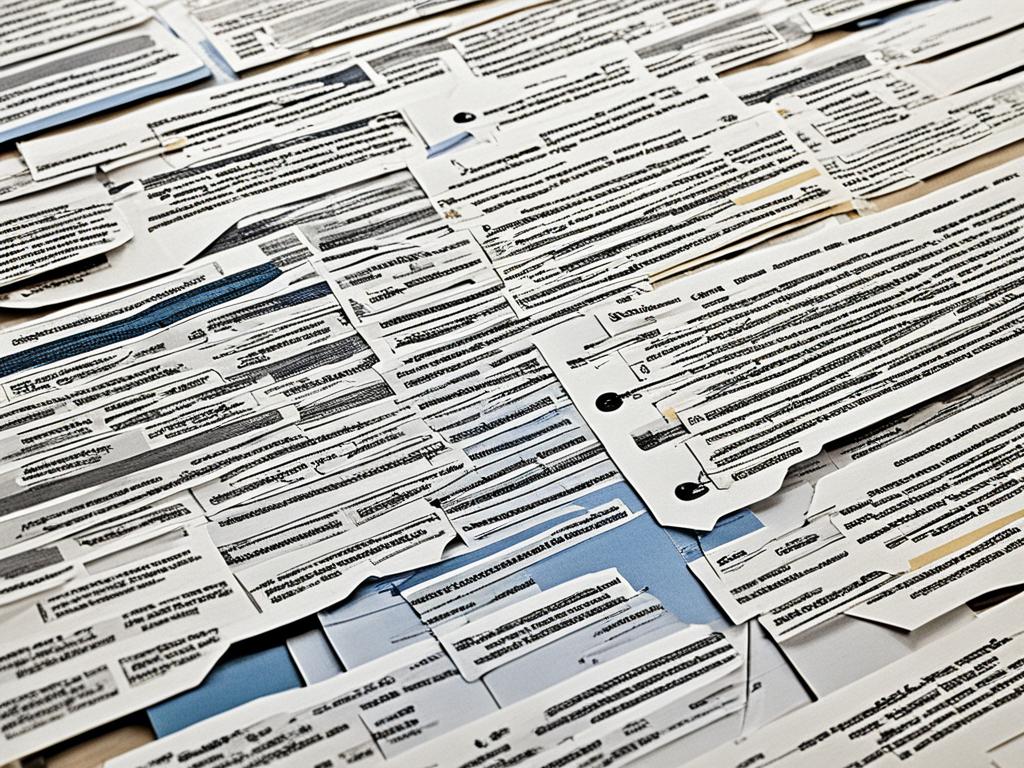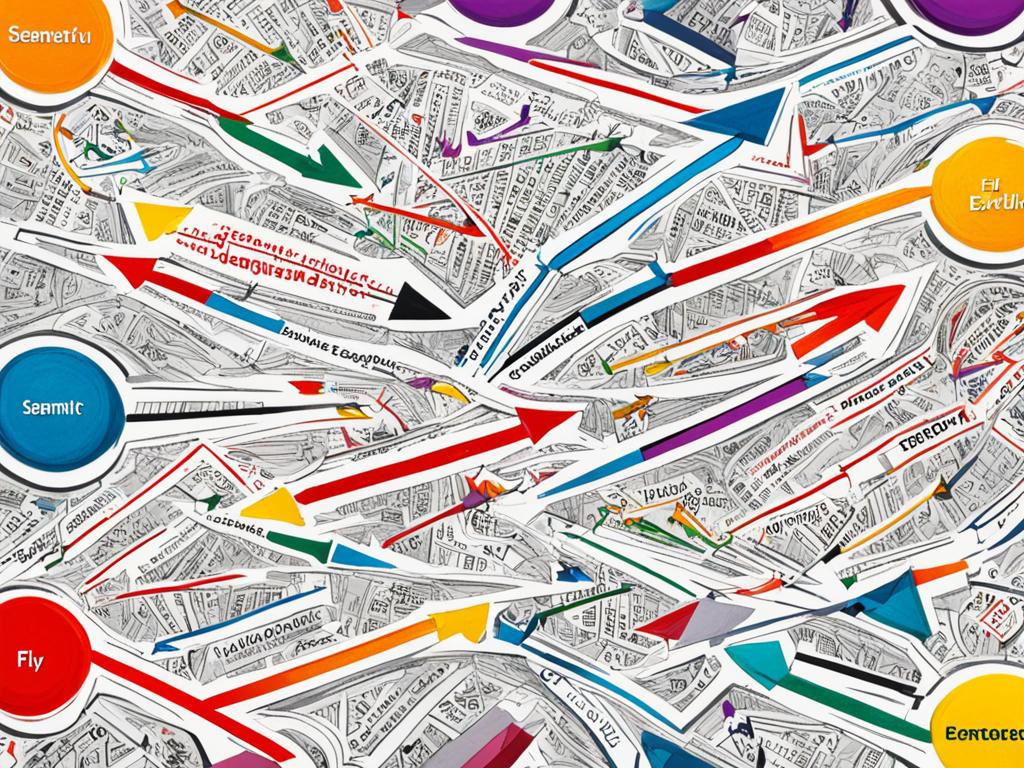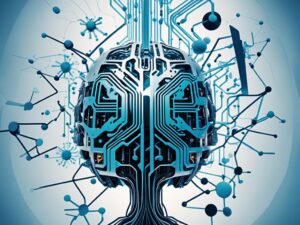
Guidelines for Reading and Understanding Comprehension
Comprehension is key to getting the most out of what we read. This article will cover how to improve your reading skills. We’ll look at how natural language processing, semantic analysis, and knowledge representation help us understand texts better.
First, it’s important to know why comprehension matters. By using effective reading strategies, like engaging with the text and connecting ideas, you can get more from what you read. Techniques like natural language processing and semantic analysis also help you find deeper meanings in texts.

This article will also explore how text analytics and discourse analysis help us get valuable insights from texts. By understanding language and text structures, you’ll become a better and more insightful reader.
Mastering the Art of Comprehension
Comprehension is key to learning and remembering things. It means understanding and getting the point from texts or talks. This skill is vital in school, work, and everyday life. Getting good at reading comprehension opens doors and helps people think deeply and critically.
Understanding the Importance of Comprehension
It’s more than just seeing words on paper. It’s about really getting into the text, making links, and figuring out what it means. Comprehension lets people go deeper into topics, keep info, and use it in real life. It’s crucial for knowledge representation and text summarization, helping readers get complex ideas.
Developing Effective Reading Strategies
To get better at comprehension, use smart reading methods. Good ways include:
- Active Reading: Really engage with the text by asking questions, guessing what comes next, and linking new info to what you know.
- Identifying Key Ideas: Spot the main points, arguments, and details in the text.
- Building Mental Models: Create pictures and ideas in your mind to help remember and organize info.
Using these methods can improve your reading comprehension. It helps you understand more and use your knowledge in different situations.

Being able to understand and get the point from texts is a strong skill. It can open new doors, boost critical thinking, and support learning and growth throughout life.
Comprehension and Natural Language Processing
In today’s world, we face a lot of information. It’s hard to keep up. That’s where natural language processing (NLP) comes in. It makes reading easier by improving how we understand written words.
NLP is a part of artificial intelligence that deals with how computers and humans talk. It uses special methods like semantic analysis and information extraction. These help readers get the full meaning of texts, making them understand better.
Semantic Analysis: Unlocking the Meaning
NLP is great at figuring out what words really mean. Natural language processing algorithms look at the context and feelings in texts. This gives readers a deeper understanding of what they’re reading.
Information Extraction: Uncovering Valuable Insights
Language understanding in NLP also helps pull out important info from texts. It spots key details like people, events, and connections. This makes reading faster and more effective, improving our text analytics skills.
| NLP Technique | Benefit for Comprehension |
|---|---|
| Semantic Analysis | Unravels the meaning and context of words and phrases |
| Information Extraction | Identifies key entities, relationships, and events within the text |
By adding natural language processing to reading, we can get a deeper understanding of texts. This leads to smarter choices and more active thinking.

Language Understanding: A Semantic Approach
The semantic approach helps us see the deeper meanings in written words. It uses semantic analysis to show how words connect and share meanings. This way, we can understand language better.
Unraveling the Layers of Meaning
Words and phrases mean more than what they say. With language understanding, we can see the hidden meanings and cultural references. This helps us get to the heart of language.
Text analytics lets us study these meanings and connections. It shows us the emotional and deeper meanings in texts. This helps us see what’s really being said.
This method is useful for many things, like understanding complex texts or marketing messages. It helps us see through the surface to the real meaning.

Using this approach, we go beyond just reading words. We get a deeper, richer understanding of language. This lets us connect with texts on a deeper level.
Text Analytics: Extracting Insights from Written Content
In today’s world, getting insights from written content is key. Text analytics is a powerful tool that helps us find patterns, feelings, and important info in lots of text data. It uses advanced methods like information extraction and text summarization to dig deep into text and find valuable insights.
Sentiment analysis is a big part of text analytics. It shows us the feelings and overall mood in a piece of text. This is super useful for understanding customer opinions, social media talks, and political views. Text analytics can also find and pull out important names, groups, and places, giving us a better view of what the text is about.
| Text Analytics Technique | Application |
|---|---|
| Sentiment Analysis | Gauging emotional tone and sentiment in written content |
| Entity Recognition | Identifying and extracting key named entities from text |
| Text Summarization | Distilling the main ideas and key points from lengthy documents |
Text summarization is a strong part of text analytics. It makes long documents short and easy to understand. This is really useful in areas like research, journalism, and business, where you need to quickly get the main ideas from a text.
Text analytics lets us understand and get insights from the written content all around us. It’s great for researchers, marketers, or anyone who wants to make sense of lots of information. Text analytics changes how we get value from written words.

Comprehension and Knowledge Representation
Understanding written content is more than just reading words. It means creating mental models and frameworks to grasp the information deeply. This process, called knowledge representation, helps improve reading comprehension and text summarization.
Building Mental Models for Deeper Understanding
Readers don’t just take in information passively. They actively build mental models to organize and connect the ideas. These models help readers fit new knowledge into what they already know.
Creating strong mental models helps readers:
- Link ideas together meaningfully
- Spot important themes and structures
- Predict what comes next based on context
- Comprehend more deeply and actively
Building mental models is key to knowledge representation. It turns written content into a personal, structured understanding.

Tools like concept mapping and semantic networks help build strong mental models. These tools improve reading comprehension and make text summarization more effective.
Discourse Analysis: Interpreting Textual Structures
In this final section, we explore the importance of discourse analysis. It helps us understand written content deeply. By looking at text structures like coherence and cohesion, we get insights into the text’s meaning and context. This makes reading more effective and meaningful.
Discourse analysis is more than just looking at words and sentences. It shows how language conveys meaning and connects ideas. It helps readers understand the content better by seeing the big picture.
Doesn’t matter if you’re looking at an academic paper, a business report, or a piece of literature. Discourse analysis can make complex texts easier to understand. By spotting the logical flow and rhetorical devices, you can grasp the author’s message and the context better.
FAQ
What is the importance of reading comprehension?
Reading comprehension is key for understanding and remembering information in many areas. It helps people get the gist of written texts, pick out important points, and make smart choices.
How can I develop effective reading strategies to improve comprehension?
To get better at reading, try active reading, spot main ideas, build mental models, and read often. These methods help you connect with the text, organize thoughts, and make links for better understanding and remembering.
What is the role of natural language processing in reading comprehension?
Natural language processing (NLP) uses techniques like semantic analysis and info extraction to improve reading. It helps break down and understand natural language, giving insights into the text’s meaning, context, and connections.
How can semantic analysis contribute to language understanding?
Semantic analysis digs deep into the meanings, context, and relationships in texts. It helps readers get the full picture, understand the deeper meanings, and catch the main ideas.
What are the applications of text analytics in improving comprehension?
Tools like sentiment analysis, entity recognition, and text summarization help pull out key insights from texts. They make reading easier by highlighting important info, showing the mood, and giving quick summaries, helping readers quickly get the main points.
How can knowledge representation facilitate deeper understanding?
Creating mental models, frameworks, and semantic networks helps readers get a fuller grasp of what they read. It lets them organize and link ideas, leading to a deeper, more structured understanding of texts.
What is the significance of discourse analysis in reading comprehension?
Discourse analysis looks at the structure and patterns in texts, like coherence and rhetorical devices. It helps readers understand the text’s deeper meaning and context, leading to a richer comprehension.



How can I use technology, such as digital annotation tools or apps, to enhance my reading comprehension?